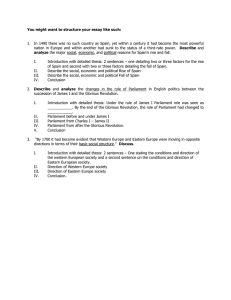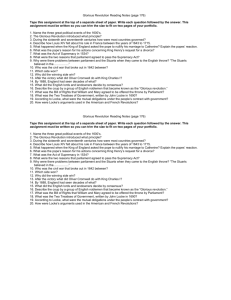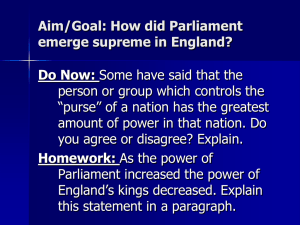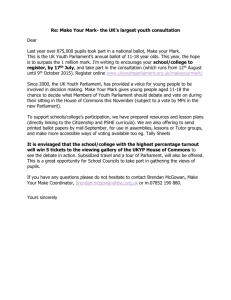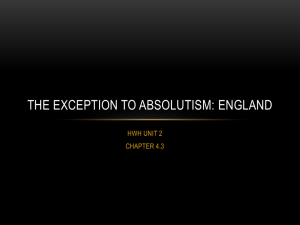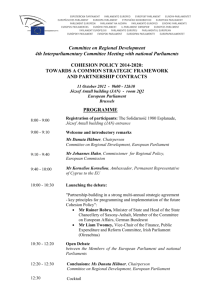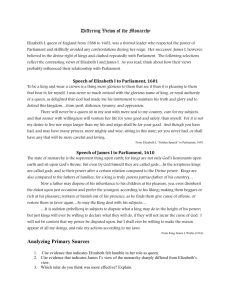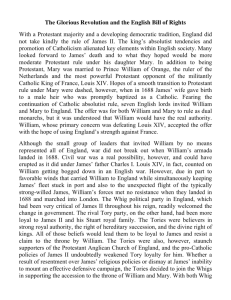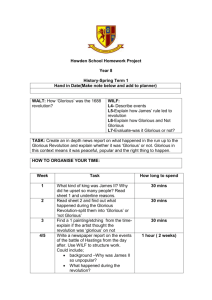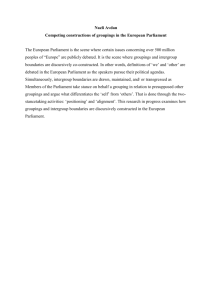Glorious Revolution
advertisement
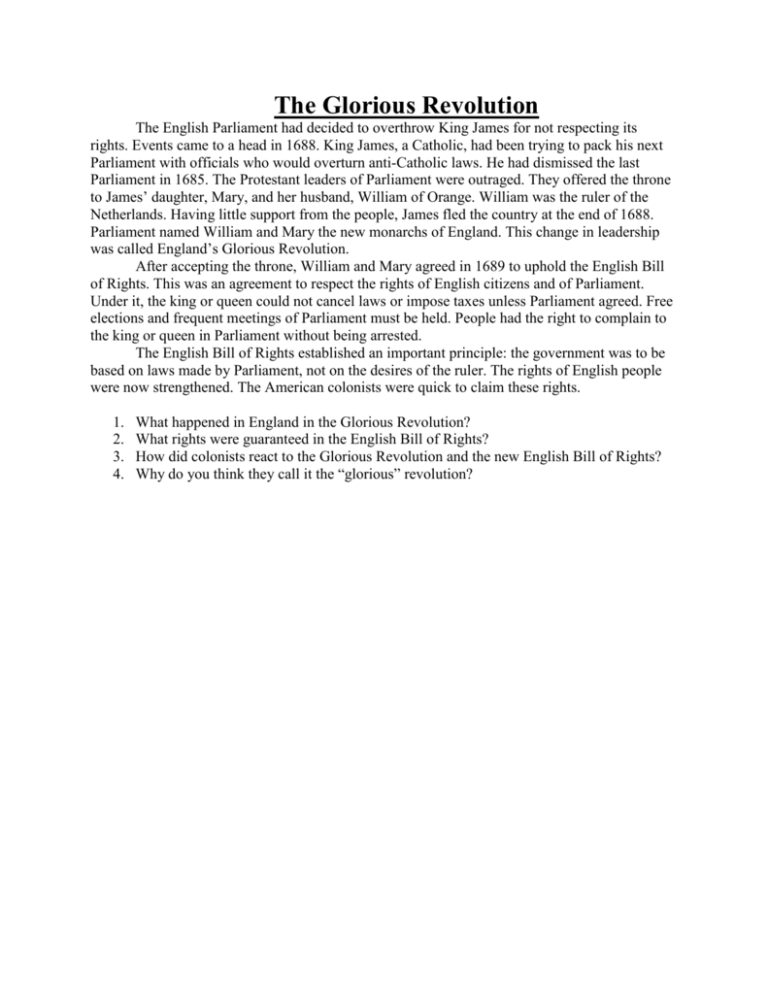
The Glorious Revolution The English Parliament had decided to overthrow King James for not respecting its rights. Events came to a head in 1688. King James, a Catholic, had been trying to pack his next Parliament with officials who would overturn anti-Catholic laws. He had dismissed the last Parliament in 1685. The Protestant leaders of Parliament were outraged. They offered the throne to James’ daughter, Mary, and her husband, William of Orange. William was the ruler of the Netherlands. Having little support from the people, James fled the country at the end of 1688. Parliament named William and Mary the new monarchs of England. This change in leadership was called England’s Glorious Revolution. After accepting the throne, William and Mary agreed in 1689 to uphold the English Bill of Rights. This was an agreement to respect the rights of English citizens and of Parliament. Under it, the king or queen could not cancel laws or impose taxes unless Parliament agreed. Free elections and frequent meetings of Parliament must be held. People had the right to complain to the king or queen in Parliament without being arrested. The English Bill of Rights established an important principle: the government was to be based on laws made by Parliament, not on the desires of the ruler. The rights of English people were now strengthened. The American colonists were quick to claim these rights. 1. 2. 3. 4. What happened in England in the Glorious Revolution? What rights were guaranteed in the English Bill of Rights? How did colonists react to the Glorious Revolution and the new English Bill of Rights? Why do you think they call it the “glorious” revolution?


